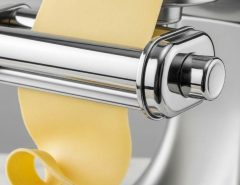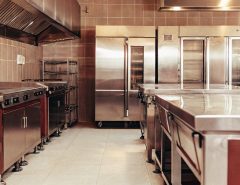An outdoor kitchen is a fantastic way to convert your backyard into an extension of your indoor living space. This extension of your living space can inspire you and your family to spend more time outdoors and are an excellent space for entertaining guests. There are many outdoor kitchen ideas available that have room for design features that fit a homeowner’s specific needs.
Designing a complete outdoor kitchen typically requires the assistance of a contractor and, in some cases, an architect. Employing outside assistance for the design and development process ensures that the new space is individualized with custom layouts, styles, and building materials. For many homeowners, building an outdoor kitchen is the perfect opportunity to draw up plans for a dream kitchen.
The design process for an outdoor kitchen is significantly more unstructured than it would be for an indoor space, simply because there is no encompassing room to consider. There are fewer limitations on the size and scale of the project, which leaves you free to decide the layout or arrangement—interested in putting in a covered seating area? How about a set of outdoor cabinets? As long as your yard has the space, the possibilities are endless.
If you are interested in building an outdoor kitchen for your home, there are a few design considerations to follow that ensure the functionality of the kitchen’s features. These outdoor kitchen design features are universal and should be a part of any building plan.
Electricity, Plumbing, and Gas
The utilities for outdoor kitchens vary based on the appliances present. Take inventory of everything in your kitchen plans that requires electricity or water. If you are working with a grill in a more basic kitchen setup, you may only need access to propane, making this portion of the planning phase easy.
The most challenging utility to install for an outdoor kitchen is water. Water for cooking should be drinkable or similar in quality to an indoor kitchen sink. Appliances such as coolers or refrigerators are most likely to incur the higher electricity costs. Building the kitchen nearer to the house can help to reduce utility installation time and make it easier to fix any issues that occur with outdoor utilities.
Lighting
When thinking about lighting for an outdoor kitchen, you probably think more about mood lighting or fire pits- lighting that enhances the atmosphere of the space. However, if you intend to use the kitchen in a similar fashion to your indoor kitchen, you will need some form of brighter task lighting for evenings or nights. Proper lighting will help reduce accidents, particularly when working with knives, a hot stove, or an open flame. Luckily, there are many options available for outdoor lighting that is both practical and stylish.
Seating Options
Seating options are essential when considering how to make your new outdoor area into a living space. Guests and family members will be most comfortable sitting together in a dedicated area with plenty of room and a central focal point, such as a fire pit or coffee table. Many outdoor kitchen designs also include bar counter seating, which can be handy when serving appetizers or drinks.
Cabinets and Storage
There are plenty of options for cookware, pots, or kitchen equipment intended for use outdoors or on a grill. These tools and instruments should have a designated storage space within your outdoor kitchen to increase the convenience and efficiency of cooking outside. You shouldn’t need space for storing food- it’s generally not a good idea to keep food outdoors, as it could attract unwelcome animals or bugs. Many styles and cabinet materials can meet your storage needs and match other kitchen design features, such as countertops or appliances.
Heating and Cooling
Heating and cooling options are essential for making everyone feel comfortable outdoors at any time of the day or evening. The worst-case scenario for any outdoor kitchen owner is if everyone feels more comfortable indoors! For some, building in a heating option might be as simple as purchasing a fire pit. Check out this guide for buying a heater for your outdoor kitchen.
Waterproofing and Covered Areas
Let’s face it- it will probably rain at some point while you are outside. However, if you have a covered seating area where you can stay comfortably dry, sitting outside while it’s raining can be pleasant and refreshing. You may want to think about how you will keep your kitchen and outdoor living space dry for this very reason.
When choosing materials for countertops and cabinets, make sure you get materials that fit your local climate. For example, if you select metal cabinets but live in Southern California, you might find that the metal is uncomfortably hot. On the other hand, if you live in Seattle or anywhere else where it frequently rains, you will need to make sure that the countertops and appliances have covered spaces and are sufficiently waterproof. Many outdoor kitchen design companies will have some advice on building materials that are adequate for your region.
Kitchen Triangle
Don’t overlook the basics of kitchen design when building your outdoor kitchen. First, there should be a clearly defined workspace triangle, with the refrigerator, sink, and stove being the three points of this triangle. The distances between these appliances should be relatively even to keep the kitchen workflow moving. Your outdoor kitchen should be just as easy to use as your indoor kitchen, which means your outdoor space should still adhere to the basic principles of kitchen design.
Conclusion– 7 Design Features To Consider Before Building Your Outdoor Kitchen
There are many design components to consider when designing an outdoor kitchen. You’ll ultimately want to make sure that your space is both comfortable and functional. With a well-organized plan for the construction and layout of the kitchen, your home living space will extend to the backyard and make your summers more enjoyable.




